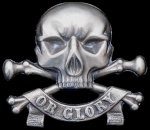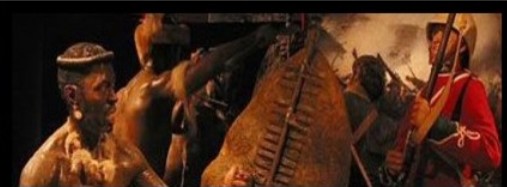| Latest topics | » The Pictorial World - March 15th 1879 Yesterday at 1:13 pm by ben2000 » The lost diary of Pvt James Owen Thu Jul 25, 2024 12:03 pm by miklew » Last of the 24th at Isandhlwana Wed Jul 24, 2024 6:16 pm by John Young » What was the uniform of field marshals/generals in the zulu war? Mon Jul 22, 2024 6:53 am by John Young » Henderson and the NNH at Rorke's Drift  Sat Jul 20, 2024 12:17 pm by SRB1965 » Capt. D. Hayes 1/3rd Regt., NNC Thu Jul 18, 2024 11:11 am by Julian Whybra » The Wrecked Camp Wed Jul 17, 2024 4:33 pm by Julian Whybra » Private N/N John Robert Branch 90th Regiment and his discovered diary Mon Jul 15, 2024 8:53 pm by 1879graves » Private John Scott 24th Regiment a fugitive at large Sun Jul 14, 2024 12:06 pm by 1879graves » 90th foot sgt T. Collins 214 Sun Jul 14, 2024 10:57 am by johnman » Baron Von Steitencron Wed Jul 10, 2024 3:10 pm by Julian Whybra » Sgt Joseph Windridge, Defender of Rorke's Drift - Memorial Tue Jul 09, 2024 3:15 am by 90th » Writing advice Sun Jul 07, 2024 4:04 pm by Julian Whybra » South Africa 1877-79, 1 clasp, 1877-8-9 (4389 Fr. Sergt. S. Smith. O/2. Bde. R.A.) Sun Jul 07, 2024 9:30 am by rai » The trashing of the Zulu monument to the brave warriors at Isandlawana March 12, 2024 has been blamed on scrap metal scavengers. Thu Jul 04, 2024 7:41 pm by ADMIN» The Goodwill Zulu Festival: Celebrating the Welsh and KwaZulu Natal Shared Heritage. Thu Jul 04, 2024 7:27 pm by ADMIN» Any nominal role of G Coy 2/24th regiment  Thu Jul 04, 2024 11:18 am by Wayne » Bassage Diary Thu Jul 04, 2024 9:31 am by Julian Whybra » Prior to Sihayo's Kraal  Thu Jul 04, 2024 9:19 am by 90th » British Fort Locations Thu Jul 04, 2024 3:40 am by 90th » Sergeant 1064 Tom Hick / Hicks G Company 2/24th Regiment Wed Jul 03, 2024 11:05 am by Julian Whybra » A Hungarian soldier in the Zulu War (?) Fri Jun 28, 2024 2:31 pm by Mr M. Cooper » Private 25B/279 Henry Sears Bugler E Company 24th Reg. KIA Isandlwana Thu Jun 27, 2024 1:07 pm by gardner1879 » Hamilton Browne's birthday Fri Jun 21, 2024 9:22 am by Julian Whybra » Zulu "Corps" Thu Jun 20, 2024 6:01 pm by Hobbes » Army Pay Department Personnel Thu Jun 20, 2024 11:49 am by Julian Whybra » Ntshingwayo birth date Sun Jun 16, 2024 11:37 am by Hobbes » Zibhebhu and Cetshwayo's family Wed Jun 05, 2024 9:11 pm by Julian Whybra » Smith's Store/Hotel Wed Jun 05, 2024 6:06 pm by Julian Whybra » Corporal James Frowen Williams F Company.  Tue Jun 04, 2024 5:20 pm by Julian Whybra » Shaka iLembe Sat Jun 01, 2024 1:27 pm by Jon84 » Bugler 1415 Thomas Finn / Flin 90th Regiment  Sat May 25, 2024 11:28 am by johnman » Inspector-General Evelyn Richard Hugh Pollard Tue May 14, 2024 10:13 am by ADMIN» Alfred Fairlie Henderson photographs. Sat May 11, 2024 8:01 am by Julian Whybra » Fairlie's Native Police Thu May 02, 2024 9:12 pm by Hobbes |
| July 2024 | | Mon | Tue | Wed | Thu | Fri | Sat | Sun |
|---|
| 1 | 2 | 3 | 4 | 5 | 6 | 7 | | 8 | 9 | 10 | 11 | 12 | 13 | 14 | | 15 | 16 | 17 | 18 | 19 | 20 | 21 | | 22 | 23 | 24 | 25 | 26 | 27 | 28 | | 29 | 30 | 31 | | | | |  Calendar Calendar |
|
| Top posting users this month | |
| New topics | » The Pictorial World - March 15th 1879 Yesterday at 1:13 pm by ben2000 » The lost diary of Pvt James Owen Thu Jul 25, 2024 12:03 pm by miklew » Last of the 24th at Isandhlwana Wed Jul 24, 2024 5:53 pm by miklew » What was the uniform of field marshals/generals in the zulu war? Sun Jul 21, 2024 12:30 pm by darthvaix » Henderson and the NNH at Rorke's Drift  Fri Jul 19, 2024 1:29 pm by SRB1965 » Capt. D. Hayes 1/3rd Regt., NNC Wed Jul 17, 2024 10:52 pm by Julian Whybra » The Wrecked Camp Sun Jul 14, 2024 8:51 am by 61MECH » The trashing of the Zulu monument to the brave warriors at Isandlawana March 12, 2024 has been blamed on scrap metal scavengers. Thu Jul 04, 2024 7:41 pm by ADMIN» The Goodwill Zulu Festival: Celebrating the Welsh and KwaZulu Natal Shared Heritage. Thu Jul 04, 2024 7:27 pm by ADMIN |
| Zero tolerance to harassment and bullying. | |
Due to recent events on this forum, we have now imposed a zero tolerance to harassment and bullying. All reports will be treated seriously, and will lead to a permanent ban of both membership and IP address.
Any member blatantly corresponding in a deliberate and provoking manner will be removed from the forum as quickly as possible after the event.
If any members are being harassed behind the scenes PM facility by any member/s here at 1879zuluwar.com please do not hesitate to forward the offending text.
We are all here to communicate and enjoy the various discussions and information on the Anglo Zulu War of 1879. Opinions will vary, you will agree and disagree with one another, we will have debates, and so it goes.
There is no excuse for harassment or bullying of anyone by another person on this site.
The above applies to the main frame areas of the forum.
The ring which is the last section on the forum, is available to those members who wish to partake in slagging matches. That section cannot be viewed by guests and only viewed by members that wish to do so. |
| Fair Use Notice | | Fair use notice.
This website may contain copyrighted material the use of which has not been specifically authorised by the copyright owner.
We are making such material and images are available in our efforts to advance the understanding of the “Anglo Zulu War of 1879. For educational & recreational purposes.
We believe this constitutes a 'fair use' of any such copyrighted material, as provided for in UK copyright law. The information is purely for educational and research purposes only. No profit is made from any part of this website.
If you hold the copyright on any material on the site, or material refers to you, and you would like it to be removed, please let us know and we will work with you to reach a resolution. |
| | | The Lower Tugela Forts |  |
| | | Author | Message |
|---|
Petty Officer Tom

Posts : 360
Join date : 2017-02-05
Location : Texas, U.S.A.
 |  Subject: The Lower Tugela Forts Subject: The Lower Tugela Forts  Fri Feb 24, 2017 6:30 pm Fri Feb 24, 2017 6:30 pm | |
| Fort Pearson, named after the Colonel of the 3rd Regiment (Buffs), commanding the column which has advanced upon Ekowe, is situated upon an eminence which commands the lower drift of the Tugela river. It is a strong earthwork, with central citadel, and is armed with a 12-pounder Armstrong gun. The view from the fort is very fine, embracing the whole of the river to its mouth, and a sweep of about forty miles into the enemy’s country. To the left, in our view, is Smith’s Store, where Lieutenant-General Lord Chelmsford has taken up his abode for a day or two whilst making an inspection of the position. Below Smith’s store is seen the Pont, which has transported all the men and material across the river. On the right is the camp of the now disbanded Native Contingent, and farther on that of the 99th, on Euphorbia, so called from a number of those trees which crown its summit. Here also is the burying-ground, tenanted by two of the Buffs, one seaman of the Active, one of the Tenedos, and an officer of the Natal Native Sappers. The rocky face of the hill on which the Fort stands is very abrupt down to the river, and thickly wooded in the crevices with small shrubs and trees. As shown in the Sketch, the river is very low, with mud banks visible, and the pontoon constructed by the Royal Engineers high and dry. The Tugela is the natural defence of Natal against the Zulus. Gun and signal departments at the Fort are in charge of a small party of men from the contingent supplied to the Naval Brigade by H.M.S. Tenedos.
That ship has given its name to Fort Tenedos, on the opposite side of the Lower Tugela Drift. The column under Colonel Pearson crossed the Tugela on Jan, 11, and at once proceeded to intrench itself in the event of any opposition. The spot selected for the prominent work was a farm-house and yard, late in the possession of a Dutch settler. The work commenced by Colonel Pearson has, since the departure of the main body of the troops, has been strengthened and completed under the superintendence of the Commandant, Lieutenant Kingscote, R.N. It would now task the capabilities of the whole Zulu army, or a very large force of a less savage character, for its reduction. The fort is situated on a gentle rise, about 300 yards from the river banks, and four miles from its mouth. The form is that of an irregular pentagon. It is protected by a strong earthwork ditch and abattis; while outside, and forming an almost complete cordon, is a line of “trous de loup,” or deep pyramidal holes; these contain pointed sticks, which are made a more effective obstacle by the addition of wire drawn in all directions over them. Several mines, to be fired by electricity, have also been laid; broken glass is thickly strewn over the interior of the ditch and slopes. Every precaution is taken, by means of spies, patrols, and vedettes, to guard against surprise by day or night. The fort is commanded by the guns of Fort Pearson, on the opposite bank of the river, which is here about 300 yards wide, twelve foot deep in some places, and with a strong current after heavy rains. The waters are dark and muddy; alligators are occasionally seen, but no accident has as yet befallen any of the numerous bathers, who have gone in for what is literally at times “a mud bath.” All traces of the farm-house and offices have long since disappeared, and the tents and hospital marquee now occupy the whole space.
The country in front extends in beautiful undulating, sloping hills, quite open, for about fifteen miles. This is now covered with the richest grass. In the distance is a missionary station, now, of course, deserted and wrecked; and between this and the Fort is the grazing ground for a large number of “trek,” or draught oxen, waiting to convey stores and ammunition to the front. The road to the Drift or ford leads down to the right of the view. Here the passage of the river is effected by a large pont, of floating bridge working on a steel hawser; the hauling from bank to bank being effected by a span of oxen. The pontoon and arrangement of the hawsers are the work of the Naval Brigade from H.M.S. Active, under Commander Campbell, R.N., and have answered their purpose admirably. The garrison proper of the fort consists of sixty seamen and officers from H.M.S. Tenedos, a company of the 99th Regiment, a few mounted infantry, and an unknown number of Kaffirs, drivers, conductors, and others. The garrison, owing to the changes in the movement of troops, has varied in force from two hundred to as many thousand. The armament is composed of three guns (a twelve, a nine, and a seven pounder), besides a Gatling and a rocket tube. It is extremely probable that this fort will be permanently held, or, at least, till the whole Zulu question is thoroughly and satisfactorily concluded.
(Source: The Illustrated London New, April 5, 1879)
Petty Officer Tom |
|   | | 1879graves

Posts : 3379
Join date : 2009-03-03
Location : Devon
 |  Subject: Re: The Lower Tugela Forts Subject: Re: The Lower Tugela Forts  Fri Feb 24, 2017 7:10 pm Fri Feb 24, 2017 7:10 pm | |
| |
|   | | rusteze

Posts : 2871
Join date : 2010-06-02
 |  Subject: Re: The Lower Tugela Forts Subject: Re: The Lower Tugela Forts  Fri Feb 24, 2017 7:24 pm Fri Feb 24, 2017 7:24 pm | |
| Sketch is by Crealock.
PS See also Plate 31 in the late Ken Gillings "Road to Ulundi Revisited" for an alternative version and a current photograph. Crealock's alternative sketch shows a bearded officer in a patrol jacket standing with his boots removed - could that be Chelmsford I wonder?
Steve |
|   | | 1879graves

Posts : 3379
Join date : 2009-03-03
Location : Devon
 |  Subject: Re: The Lower Tugela Forts Subject: Re: The Lower Tugela Forts  Fri Feb 24, 2017 8:04 pm Fri Feb 24, 2017 8:04 pm | |
| |
|   | | | | The Lower Tugela Forts |  |
|
Similar topics |  |
|
| | Permissions in this forum: | You cannot reply to topics in this forum
| |
| |
| |
